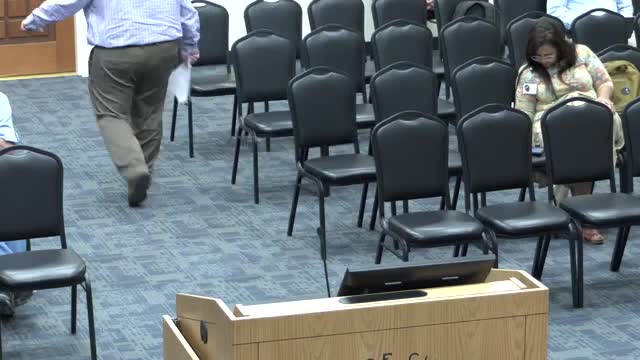Council debates critical street design changes for safety
September 24, 2024 | Cibolo City, Guadalupe County, Texas
This article was created by AI summarizing key points discussed. AI makes mistakes, so for full details and context, please refer to the video of the full meeting. Please report any errors so we can fix them. Report an error »

During a recent city council meeting, officials discussed proposed updates to the Design Criteria Manual (DCM) for residential streets, focusing on two key changes: increasing the minimum street width from 30 to 32 feet and raising the pavement standard to accommodate 500,000 easels for residential streets.
Chris Otto, the city engineer, presented the rationale behind these changes, citing the need to modernize standards that have not been updated since 2010. He noted that many current specifications are outdated and based on older guidelines from the City of San Antonio and TxDOT. The proposed changes aim to enhance the longevity and maintenance of streets, particularly in light of recent pavement failures observed in new subdivisions.
The council expressed support for the proposed width increase, which would allow for parking on both sides of the street while ensuring adequate space for emergency vehicles. Otto emphasized that a wider street would help prevent the need for no-parking signs, which can create community tension. The discussion also included the potential benefits of \"marrying\" sidewalks to curbs to reduce water infiltration issues that can damage pavement.
Concerns were raised regarding the implications of these changes on existing neighborhoods, particularly those with narrower streets that may struggle to accommodate parking and emergency access. Council members debated the potential for enforcing new standards retroactively, with some expressing skepticism about the feasibility and cost of such measures.
Additionally, the council discussed the importance of addressing traffic safety in neighborhoods with long, straight streets that may encourage speeding. Suggestions included implementing traffic calming measures and ensuring that new developments incorporate features to slow down traffic.
The meeting concluded with a consensus on the need for further discussion regarding the specifics of the proposed changes and their long-term impact on the community. The council is expected to continue refining the DCM updates in future sessions, with an emphasis on balancing safety, accessibility, and community needs.
Chris Otto, the city engineer, presented the rationale behind these changes, citing the need to modernize standards that have not been updated since 2010. He noted that many current specifications are outdated and based on older guidelines from the City of San Antonio and TxDOT. The proposed changes aim to enhance the longevity and maintenance of streets, particularly in light of recent pavement failures observed in new subdivisions.
The council expressed support for the proposed width increase, which would allow for parking on both sides of the street while ensuring adequate space for emergency vehicles. Otto emphasized that a wider street would help prevent the need for no-parking signs, which can create community tension. The discussion also included the potential benefits of \"marrying\" sidewalks to curbs to reduce water infiltration issues that can damage pavement.
Concerns were raised regarding the implications of these changes on existing neighborhoods, particularly those with narrower streets that may struggle to accommodate parking and emergency access. Council members debated the potential for enforcing new standards retroactively, with some expressing skepticism about the feasibility and cost of such measures.
Additionally, the council discussed the importance of addressing traffic safety in neighborhoods with long, straight streets that may encourage speeding. Suggestions included implementing traffic calming measures and ensuring that new developments incorporate features to slow down traffic.
The meeting concluded with a consensus on the need for further discussion regarding the specifics of the proposed changes and their long-term impact on the community. The council is expected to continue refining the DCM updates in future sessions, with an emphasis on balancing safety, accessibility, and community needs.
View full meeting
This article is based on a recent meeting—watch the full video and explore the complete transcript for deeper insights into the discussion.
View full meeting
